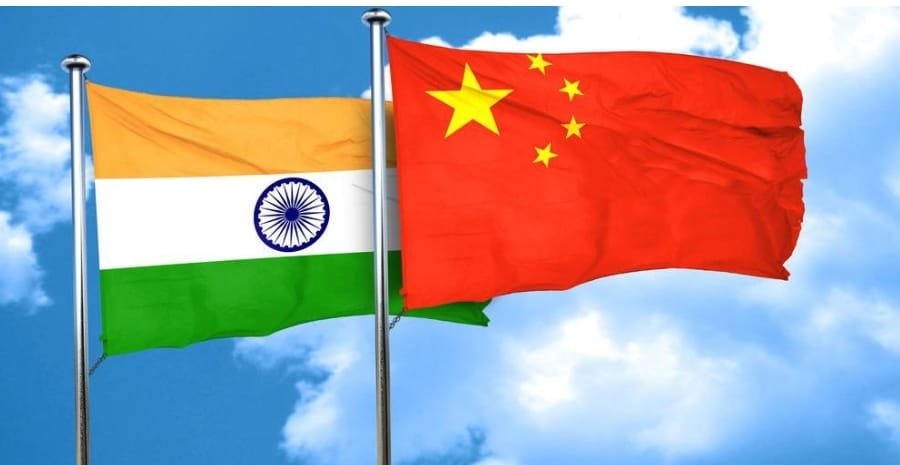India’s relationship with China has always been a puzzle of contradictions — moments of cooperation paired with deep distrust, booming trade alongside simmering border tensions. The latest development in this uneasy relationship is the decision to resume direct flights between India and China by late October 2025, after more than five years of suspension. This follows a period of noticeable calm: signs of border stability, diplomatic visits, the revival of the Kailash-Manasarovar Yatra, and an increase in people-to-people exchanges.
On the surface, these steps signal a thaw. Yet beneath this veneer of normalcy lies a history of mistrust and unresolved disputes. India, while welcoming the recent calm, knows that believing China blindly would be naïve. This article explores the sources of India’s caution, the meaning of the resumed flights, and the long-term strategy India is likely to pursue.
A Recent Calm in Relations
For the first time in years, the India-China relationship looks less turbulent. Several developments mark this improvement:
Border De-escalation: After the deadly Galwan Valley clash in 2020, both nations have engaged in multiple rounds of military and diplomatic talks. Recent reports suggest that tensions along large parts of the Line of Actual Control (LAC) have eased, with troop disengagement and reduced friction. While not fully resolved, the situation is calmer than in the years immediately following Galwan.
High-Level Diplomacy: External Affairs Minister S. Jaishankar and China’s top diplomats have met multiple times over the past year. Prime Minister Narendra Modi’s visit to China for the Shanghai Cooperation Organisation summit was another milestone, where both sides agreed to view each other more as development partners than rivals.
Resumption of Pilgrimages: The sacred Kailash-Manasarovar Yatra, suspended since 2020, is being revived. This has symbolic as well as practical importance, signaling renewed people-to-people connectivity.
Air Services Agreement: After long negotiations, both countries reached an “in principle” understanding to allow direct commercial flights once again. Indian carrier IndiGo has already announced routes, beginning with Kolkata-Guangzhou from late October, with plans to extend to Delhi-Guangzhou.
These measures together suggest that both New Delhi and Beijing are willing to bring stability back into the relationship, at least for now.
Why India Remains Wary
Despite this calm, the Indian establishment does not — and should not — fully believe China. Several reasons justify this caution.
Border Disputes and Strategic Ambiguity
The most pressing problem remains the unresolved border. India and China share a 3,488 km Line of Actual Control, much of it undefined and disputed. Even as disengagement has occurred in some sectors, China continues to build roads, bridges, and military infrastructure in sensitive areas. The lack of a permanent settlement means that peace is fragile and could unravel quickly.
Broken Promises in the Past
China has often been accused of not honoring past agreements. The 1993 and 1996 border peace accords were meant to prevent armed conflict, but they failed to stop the Galwan clash of 2020. Similarly, while both nations agreed on confidence-building measures, China’s aggressive patrols and incursions raised suspicions. India has learned from these experiences that written agreements do not always translate into trust.
The China–Pakistan Nexus
China’s close partnership with Pakistan is another source of unease. The China-Pakistan Economic Corridor (CPEC), a flagship project of Beijing’s Belt and Road Initiative (BRI), passes through Pakistan-occupied Kashmir, territory India claims as its own. Additionally, China has consistently supported Pakistan diplomatically, including shielding it in the United Nations on issues like terrorism. This nexus undermines India’s security environment and reinforces distrust.
Economic Dependency and Trade Imbalance
China remains one of India’s largest trading partners, but the relationship is lopsided. India imports far more from China than it exports, leading to a massive trade deficit. Critical sectors such as electronics, pharmaceuticals (active pharmaceutical ingredients), and renewable energy depend heavily on Chinese inputs. This creates strategic vulnerabilities, as Beijing could use trade as leverage in times of crisis.
Strategic Rivalry in Asia
At a broader level, India and China have competing visions for Asia. Beijing seeks regional dominance through the Belt and Road Initiative and by increasing its presence in the Indian Ocean. India, on the other hand, has aligned more closely with countries like the United States, Japan, and Australia in forums such as the Quad to counterbalance Chinese influence. This rivalry ensures that cooperation will always be cautious and conditional.
Why Flights Resumed Anyway
Given all these concerns, why did India agree to resume direct flights? The answer lies in pragmatism.
Economic Benefits
Despite rivalry, trade between India and China crossed $100 billion in recent years. Resuming flights lowers barriers for businesspeople, traders, and investors, making commerce more efficient. In a global economy marked by uncertainty, cutting off such connectivity would harm India’s own interests.
People-to-People Diplomacy
Flights also enable tourism, pilgrimages, academic exchanges, and cultural interactions. These human connections serve as a stabilising factor in international relations, softening the edges of political disputes.
Multilateral Image
India aspires to be seen as a responsible global actor. Maintaining a total freeze on flights and exchanges would portray India as rigid or confrontational. By restoring connectivity, India signals that it can balance firmness on security with openness to cooperation.
Strategic Signaling
Resuming flights is not an act of blind trust; it is a form of signaling. India is showing willingness to engage, but under controlled and cautious terms. This helps reduce tensions while preserving space for assertiveness if needed.
India’s Balancing Strategy: Engage but Prepare
The broader picture is that India is not moving towards blind friendship with China. Rather, it is practicing a dual strategy:
Engagement: Keep diplomatic channels open, promote people-to-people ties, and seek areas of cooperation such as trade, climate action, and global governance.
Preparation: Continue strengthening border defenses, diversify economic dependencies, and build strategic partnerships with like-minded countries.
This approach ensures that India does not appear obstructionist internationally, but also does not expose itself to the risks of over-reliance on China.
Risks India Must Guard Against
Even as flights resume and relations improve, India must remain vigilant:
The calm along the LAC may not last forever; a single clash could undo progress.
Infrastructure buildup on both sides could fuel another round of confrontation.
Overdependence on Chinese imports could undermine India’s economic sovereignty.
Engagement must be reciprocal; India should insist on fair treatment for its businesses and citizens in China.
Calm Is Welcome, Trust Must Be Earned
The resumption of direct flights between New Delhi and Beijing by late October 2025 is an important symbolic and practical step toward stabilising ties. It reflects a recognition that complete isolation is neither feasible nor desirable. The recent calm along the border, the revival of pilgrimages, and the return of high-level diplomacy all suggest that both sides prefer stability over confrontation, at least for now.
But trust is another matter. The weight of history — from the 1962 war to the 2020 Galwan clash — and the realities of strategic rivalry mean that India should not and cannot fully believe in China’s intentions. Engagement, yes; blind trust, no.
For India, the path forward lies in a careful balance: welcoming stability and cooperation where possible, while remaining fully prepared for the challenges that may resurface. The return of direct flights is a positive development, but it is only a small step in a long and complex journey where realism, not idealism, must guide policy.












